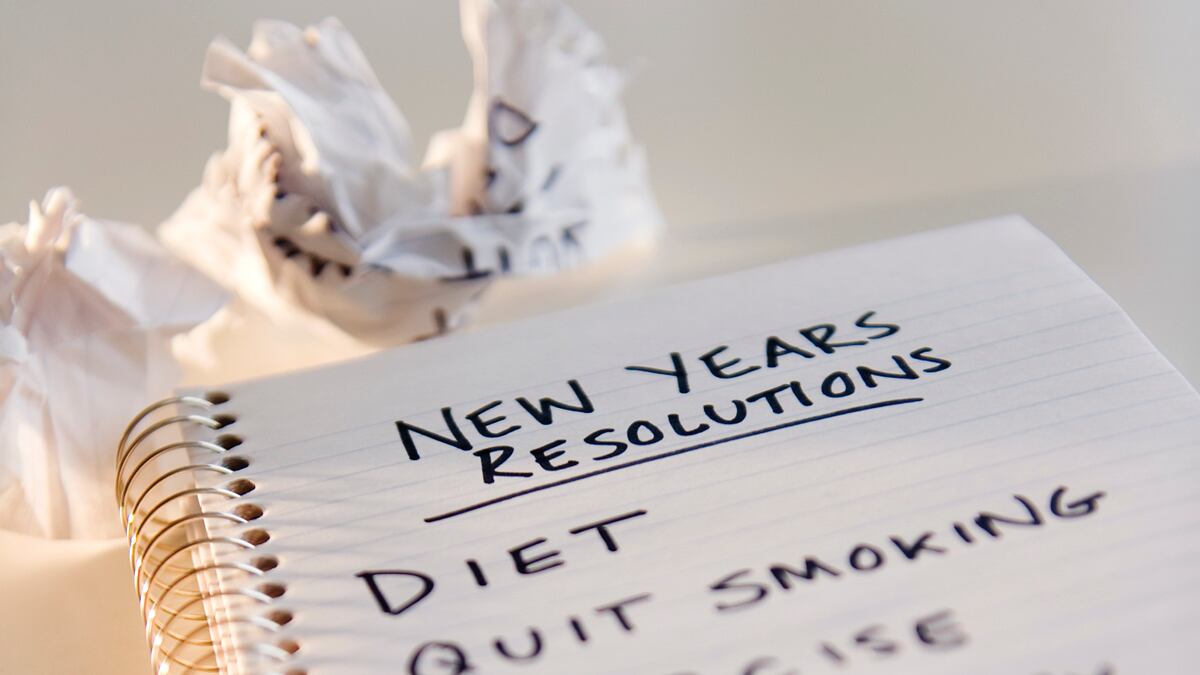Why do we make New Year’s resolutions? What does this custom tell us about ourselves and our society?
The most common kind of resolution aims at personal self-improvement: lose weight; exercise more; get out of debt; quit smoking; learn Spanish; spend less time on Facebook. This clearly indicates a tendency toward dissatisfaction with the way we are, a mindset that occurs naturally in a culture steeped in the Calvinist doctrine of humanity’s total depravity. Yet it also expresses hope—the thing with feathers that allows us to believe self-improvement is possible. Indeed, given most people’s lamentable track record at keeping past resolutions, one could say of each year’s new batch what Dr. Johnson said of second marriages, that they represent the triumph of hope over experience.
So that’s good. Hope is surely better than despair. Let’s admit, though, to another troubling facet of New Year’s resolutions: they’re for procrastinators. Back in the day, the Babylonians—supposedly the first resolutionaries—would begin the new year by returning borrowed tools and paying off debts. Notice the difference: they paid off their debts; we say we will do so … some time …soon. True, the Babylonians had it easy since they didn’t have credit cards, but the point is still valid.

In fact, I’d go further. We don’t just use resolutions as a way of putting things off (I’ll start my new diet/exercise routine/frugal lifestyle come the new year—yes I will!): we use them as an excuse for end-of-the-old-year indulgence. Our future good intentions license the December extravagances scripted by the commercial interests that tell us how to celebrate our holidays and other rituals. So even if we do manage to stick to our pledge, the first couple of months of the new year will be spent repairing the damage just done to wallet and waistline.
(Of course, there’s an obvious solution to this particular problem: move the beginning of the new year to a week before Christmas. Let’s face it, though, this is not going to happen so long as Congress is in thrall to the liquor, retail, and wrapping-paper lobbyists.)
The kinds of resolutions we make also say something about us. The five main categories seem to be: (a) physical improvement (lose weight, lift weights); (b) moral improvement (cut down on extramarital affairs); (c) develop a skill (learn the bagpipes); (d) do something new (see the Grand Canyon); (e) accomplish a specific goal (read Proust, fix the faucet).
These categories can, of course, overlap, but that’s a good thing, since it offers a way of avoiding resolution fatigue. Psychologists tell us we’re more likely to succeed if we commit ourselves to one goal rather than many. So the skilled resolutionary will craft resolutions that cover the bases: e.g., take up tennis (novelty, skill) in order to get fit (physical improvement) and defeat one’s obnoxious colleague on the court (specific goal), while not forgetting to be magnanimous in victory (moral improvement).
Unfortunately, the chances of failure are high. According to Marti Hope Gonzales, Aasociate professor of psychology at the University of Minnesota, research shows that “six weeks after people make their New Year's resolutions, 80 percent have either broken them or couldn't remember what they were."
Why is this? There’s a simple explanation, of course: we’re lazy, weak-willed slobs. There’s also a simple solution: lower the bar! Resolve to try at least three new flavors of ice cream. Commit to rereading Goodnight Moon. Unfortunately, although this strategy will keep you on the wagon, it probably won’t deliver the desired sense of accomplishment. (If it does, you have other problems.)
A more flattering explanation of the high failure rate is that we’re touchingly naive, even idealistic, and so keep asking too much of ourselves. (Run a marathon. Read Proust—in French.) The ideal is to find the golden mean, to hit the resolutionary sweet spot by committing to something doable yet demanding, something that allows you eventually to unfurl your “mission accomplished” banner with a good conscience.
All very good in theory, of course, but the sorry truth is that most of us are still likely to end up failing and, what’s worse, feeling like failures. This is a serious problem with resolutions: they’re a fast track to reduced self-esteem. A more radical approach is obviously needed. So here’s my modest proposal. Instead of making resolutions for ourselves, let’s establish a tradition of making them for other people.
There are many possible ways this could be organized, but I think the best way would be to make it a kind of game. After a big holiday dinner with family or friends, everyone draws the name of someone present out of a hat. On a slip or paper they write out a resolution they think the person whose name they have drawn should make. These resolutions are then folded up, placed in the hat, and one by one are drawn out and read aloud. After each drawing the group debates which individual should be given the resolution in question. (A five-minute timer might be useful here.) Following the discussion a vote is taken and the outcome recorded.
This may not reduce the percentage of failures, but it should at least diminish the sense of having failed. To be sure, since a list of names with attached resolutions is kept and archived, it’s harder to plead forgetfulness. Indeed, the following year the game might begin with a reading of the past year’s list just for a little extra sport. But those who have failed to reach their mark will blame themselves less than they do now, since their resolutions were imposed on them rather than freely chosen. And the game offers hours of innocent, old-fashioned participatory entertainment, pulling people away from their computer screens, promoting face-to-face interaction, and boosting employment prospects for family therapists and divorce lawyers.
Admittedly, one can imagine the debates becoming a bit bare-knuckle at times (“OK, who do we think should resolve to finally do their fair share of housework/treat their grown children like adults/quit trying to learn the bagpipes?”). So as a safer alternative, how about distributing responsibility for success or failure more widely by ditching individual pledges and collectively deciding on a New Year’s resolution for the nation?
It shouldn’t be difficult to arrange. Throughout the year newspapers invite suggestions from their readers. Around Thanksgiving an editorial committee draws up and publishes a shortlist, and through December people vote online or by phone. At midnight on New Year’s Eve, as the ball in Times Square hits the ground, the National New Year’s Resolution is revealed, high in the sky in flashing neon. The nation is brought together by a renewed sense of common purpose. We face the new year with hope in the national heart, determination on the collective brow, and a pleasing awareness that failure will not reflect too badly on us personally.
Suggestions are invited.





